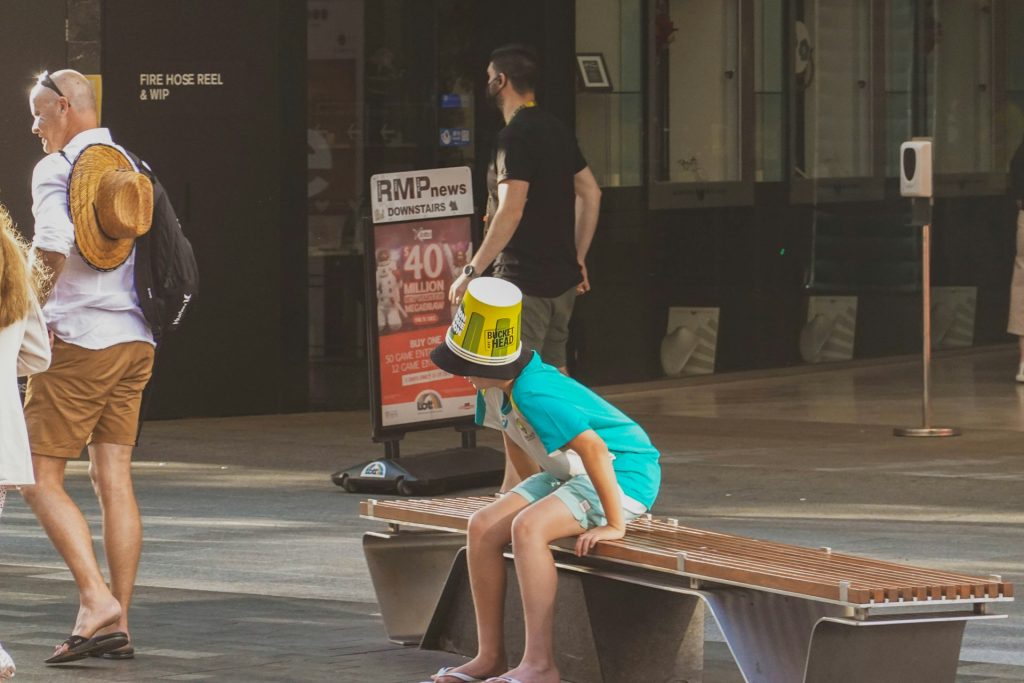
If you’ve ever pretended to be immersed in your grocery list because your child blurted out something awkward, you’re not alone. From grocery store meltdowns to blurting out private family details, kids seem to have a special talent for turning everyday outings into cringe-worthy moments.
These episodes can make even calm caregivers want to hide—but they’re also part of normal child development. In fact, these public slip-ups tie into emotional growth, learning social norms, and a child’s emerging sense of humor.
Here are eight “Oh no, did they really do that?” moments, along with practical ways to react calmly and teach important lessons.
1) Blunt (and Inappropriate) Comments
Children say what they think—filters are optional. Whether it’s commenting loudly on someone’s appearance or repeating something they overheard at home, this honesty can be more mortifying than malicious. While shocking, it’s a sign of a child still figuring out social rules. Turn these moments into teachable ones: encourage them to think about others’ feelings, talk quietly, or choose kinder words. Over time, they’ll learn that empathy and tact matter.
2) Epic Meltdowns in Checkout Lines
Of all embarrassing moments, public tantrums in stores rank high. You’re juggling coupons, scanning items, and your child melts down over a candy bar they can’t have. It’s best to keep your cool—shouting back often fuels the fire. Instead, stay composed, acknowledge how they feel (“I see you’re upset”), and if needed, remove them from the situation for a breather. Modeling calm under stress can help your child develop self-regulation faster than any power struggle.
3) Unwanted Bathroom Announcements
Sometimes kids broadcast bathroom updates at inopportune times, whether at a restaurant or during a family gathering. Yes, it’s funny—until you notice the neighboring tables listening in. Children’s curiosity about bodily functions is normal, but it can take time to learn privacy boundaries. React lightly, use gentle reminders about “private info,” and discuss how to ask discreetly for the bathroom. That way, you preserve their sense of body autonomy without feeling mortified every time they need to go.
4) Food Fights or Calling Food “Gross”
Nothing says awkward like your child shouting how “gross” Grandma’s casserole is at the dinner table—or worse, tossing it across the room. While it might feel disrespectful, many kids struggle with new tastes or textures. Instead of scolding, try calmly saying, “We don’t say food is gross. You can say ‘no, thank you.’” Encouraging good manners guides them without shaming. And if the meltdown continues, focusing on empathy—maybe they’re genuinely uncomfortable with the meal—can resolve it without a major scene.
5) Dressing (Way) Outside the Norm
Spider-Man suits to the doctor’s office or tiaras to the grocery store can make bystanders do a double-take. But these fashion statements usually stem from kids exploring identity and asserting independence. Unless there’s a safety risk—like skipping a coat in winter—allowing odd outfit choices fosters confidence. Embrace the quirkiness; it’s a small embarrassment compared to the freedom your child feels in expressing themselves.
6) Loud “Private” Questions
Kids sometimes pick the worst places to air personal or private queries—like right at the dinner party. If your child shouts, “Why does Uncle Tim have a big belly?” it can feel mortifying, but it’s actually them being curious. Respond calmly by saying, “That’s a good question—let’s talk about that quietly later.” Over time, they’ll pick up cues on when certain topics are okay (like at home) and when they need to hush.
7) Sudden Disrobing or Costume Changes
From ripping off shoes mid-store to insisting on pajamas at a formal event, kids can have minimal grasp on what’s socially acceptable clothing. Often, these acts come from comfort or control needs. The key is gently reminding them of what’s required or allowed in public spaces and having a quick fix—like slip-on shoes or a compromise outfit—ready to go. Think of it as fostering independence within safe boundaries.
8) Acts of Defiance to Gain Attention
Sometimes kids seem to create a public ruckus simply to see how you’ll react. This might range from refusing to move to staging a mini protest on the sidewalk. Experts say such defiance can reflect unmet emotional needs or general exploration of boundaries. Offer consistent, empathetic support at home so they don’t feel starved for attention. In public, step aside calmly, acknowledge feelings, and give them a clear route to compliance without escalating it into a battle.

Public slip-ups are an expected part of child development. What counts is how we parents respond. Staying calm, offering gentle redirection, and explaining social norms in age-appropriate language can turn cringe-worthy moments into lessons. It might not erase that initial flush of embarrassment, but it does help your child learn more about empathy, manners, and self-control. And remember, every parent has their own “most embarrassing public meltdown” story—yours just adds to the camaraderie.
Has your child done something hilariously mortifying in public lately? Share your epic moments below—sometimes laughter and shared experiences are the best remedies for the parenting blues.
Read More
- 9 Surprising Benefits of Letting Kids Make Their Own Rules for a Day
- Want Great Kids Movies for Free? These Are Free Movies on YouTube for Kids

Samantha Warren is a holistic marketing strategist with 8+ years of experience partnering with startups, Fortune 500 companies, and everything in between. With an entrepreneurial mindset, she excels at shaping brand narratives through data-driven, creative content. When she’s not working, Samantha loves to travel and draws inspiration from her trips to Thailand, Spain, Costa Rica, and beyond.